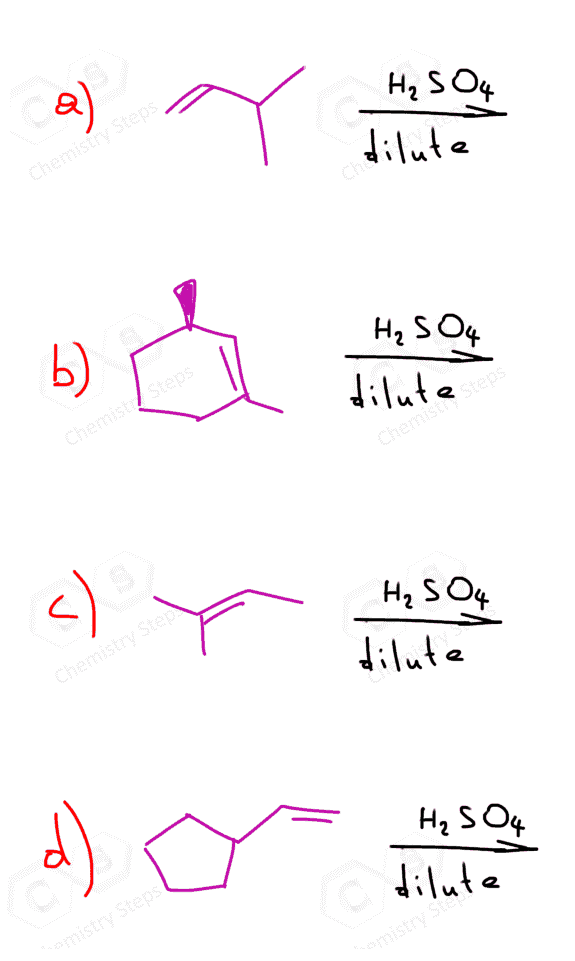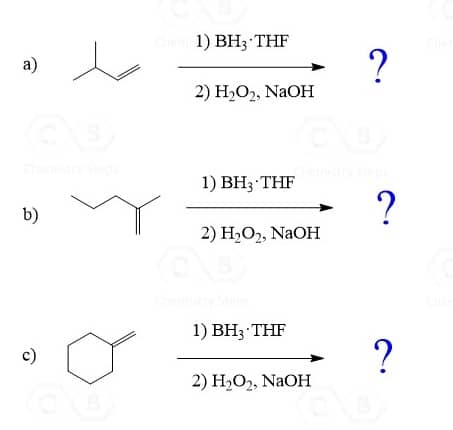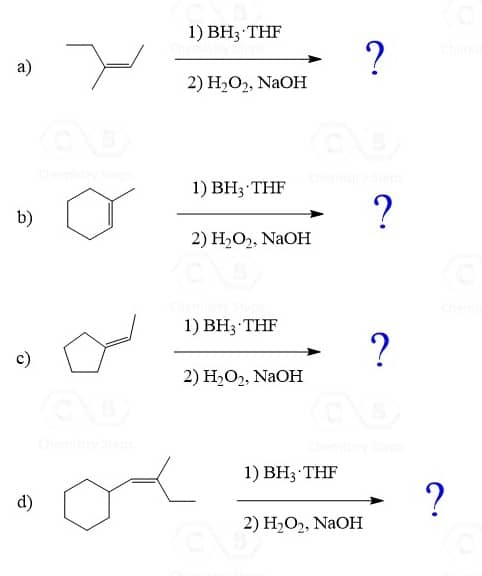There are two main ways of converting alkenes to alcohols, and both are hydration reactions of alkenes. One is the acid-catalyzed hydration of alkenes, and the other is the hydroboration-oxidation of alkenes. An important difference between these methods is the regiochemistry of the water addition – that is on what carbon the H and OH groups appear in the product:

Acid-Catalyzed Hydration of Alkenes
The acid-catalyzed hydration of alkenes follows the Markovnikov’s rule, whereas the hydroboration-oxidation places the OH group in the anti-Markovnikov position. A quick reminder, Markovnikov’s rule is followed when the X component of the HX reactant (for example HCl, HBr, HI, HOH) adds to the more substituted carbon atom. We have dedicated posts for each of these reactions that you can read, but here, we’ll put a quick summary mechanism for them to understand their regiochemistry. Let’s start with the acid-catalyzed hydration of but-1-ene:
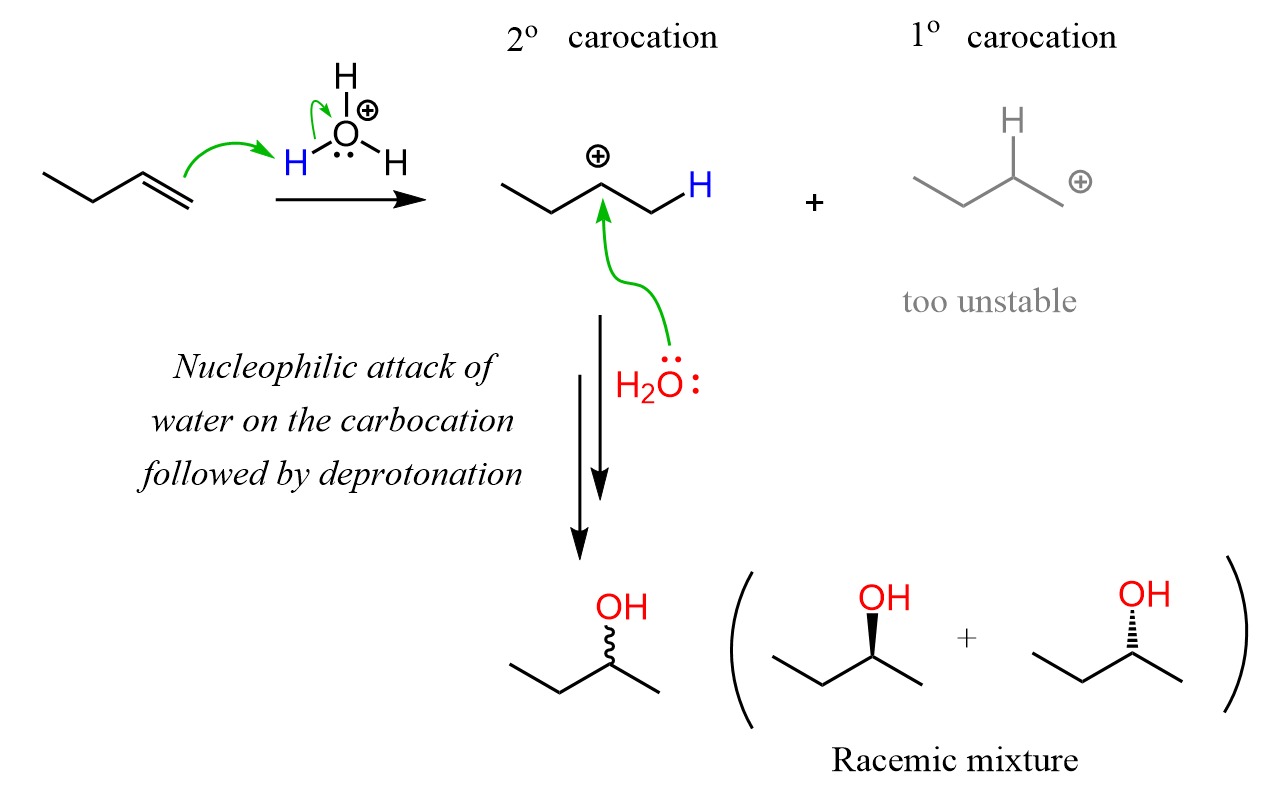
Notice that the reaction goes through a carbocation intermediate, and this should be a hint to you to watch out for possible rearrangements. Check out the post about rearrangements in addition reactions of alkenes. As we have seen in SN1 and E1 reactions, whenever possible carbocation intermediates will undergo a rearrangement to form the more stable analog.
Rearrangements in Acid-Catalyzed Hydration of Alkenes
In the example we have shown above, there is no possibility of converting the secondary carbocation to a tertiary carbocation thus no rearrangement occurs. Let’s consider addition of water to alkene going through a transformation of a secondary carbocation to a tertiary one:

Oximercuration-Demercuration to Avoid Rearrangements
One way of avoiding a rearmament in the hydration of alkenes following the Markovnikov’s rule is the use of mercury acetate (Hg(OAc)2). This is called the Oxymercuration-Demercuration reaction for the hydration of alkenes:

You can check the details including the mechanism of Oxymercuration-Demercuration here. One disadvantage of this reaction is the toxicity of the catalyst, so it may not be the best way of avoiding a rearrangement.
Hydroboration-Oxidation of Alkenes
The hydroboration-oxidation does not go through a carbocation intermediate, and therefore, it adds the OH in anti Markovnikov fashion without any rearrangements:

Another difference between acid-catalyzed hydration and hydroboration is the stereochemistry of the addition. While hydroboration-oxidation is a syn addition, meaning both the hydrogen and OH add to the same face of the double bond, there is no stereoselectivity in the acid-catalyzed hydration as the carbocation is attacked from both sides of its planar geometry. Check the corresponding articles for more details about these reactions.
Let’s summarize the strategies for the hydration reactions of alkenes via Markovnikov and anti-Markovnikov addition of water, as well as the strategies for avoiding possible rearrangements:
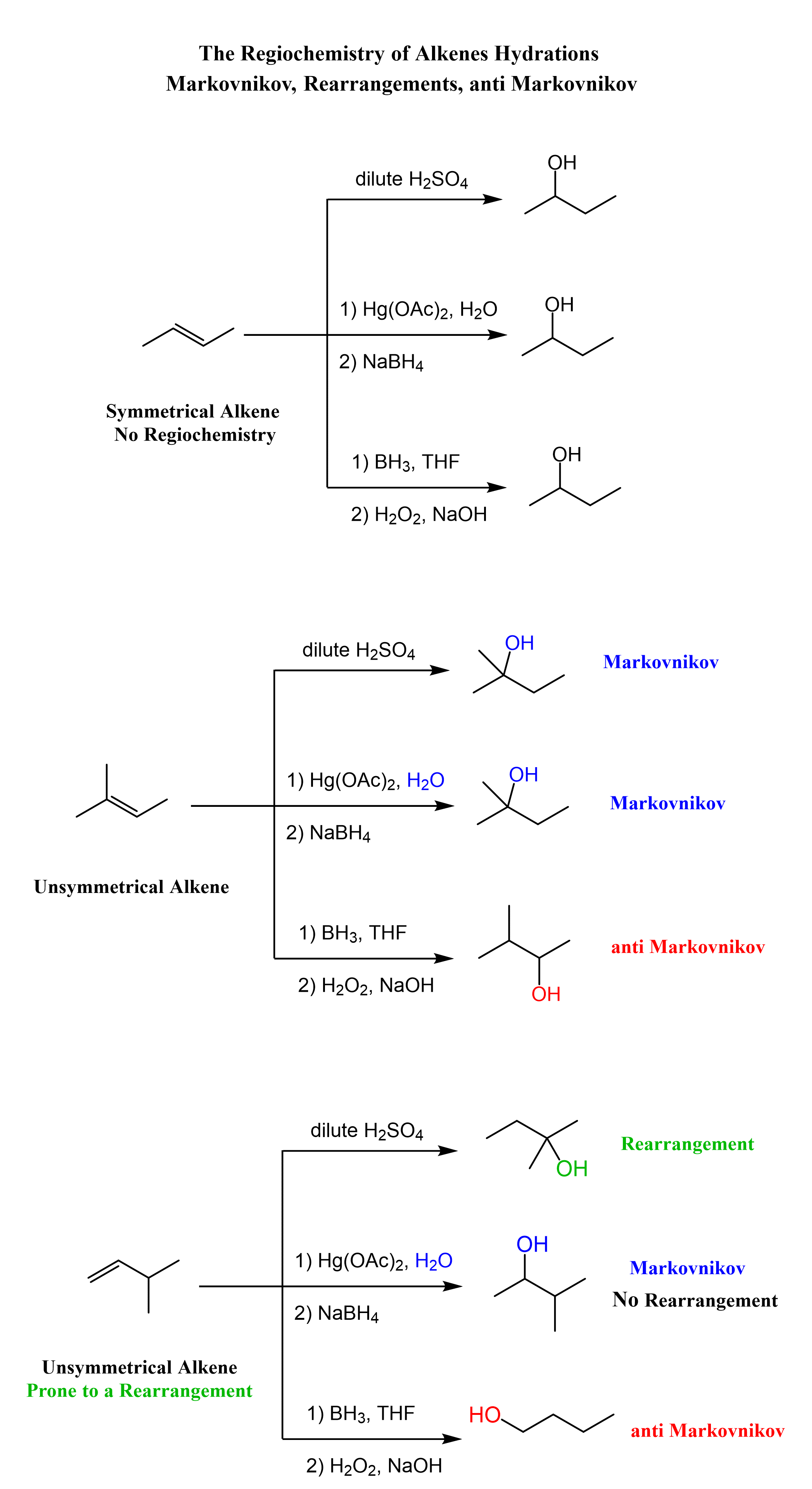
Alkenes to Alcohols via Addition-Substitution Reactions
An indirect way of converting alkenes to alcohols can be the conversion of alkyl halides synthesized from the alkenes.
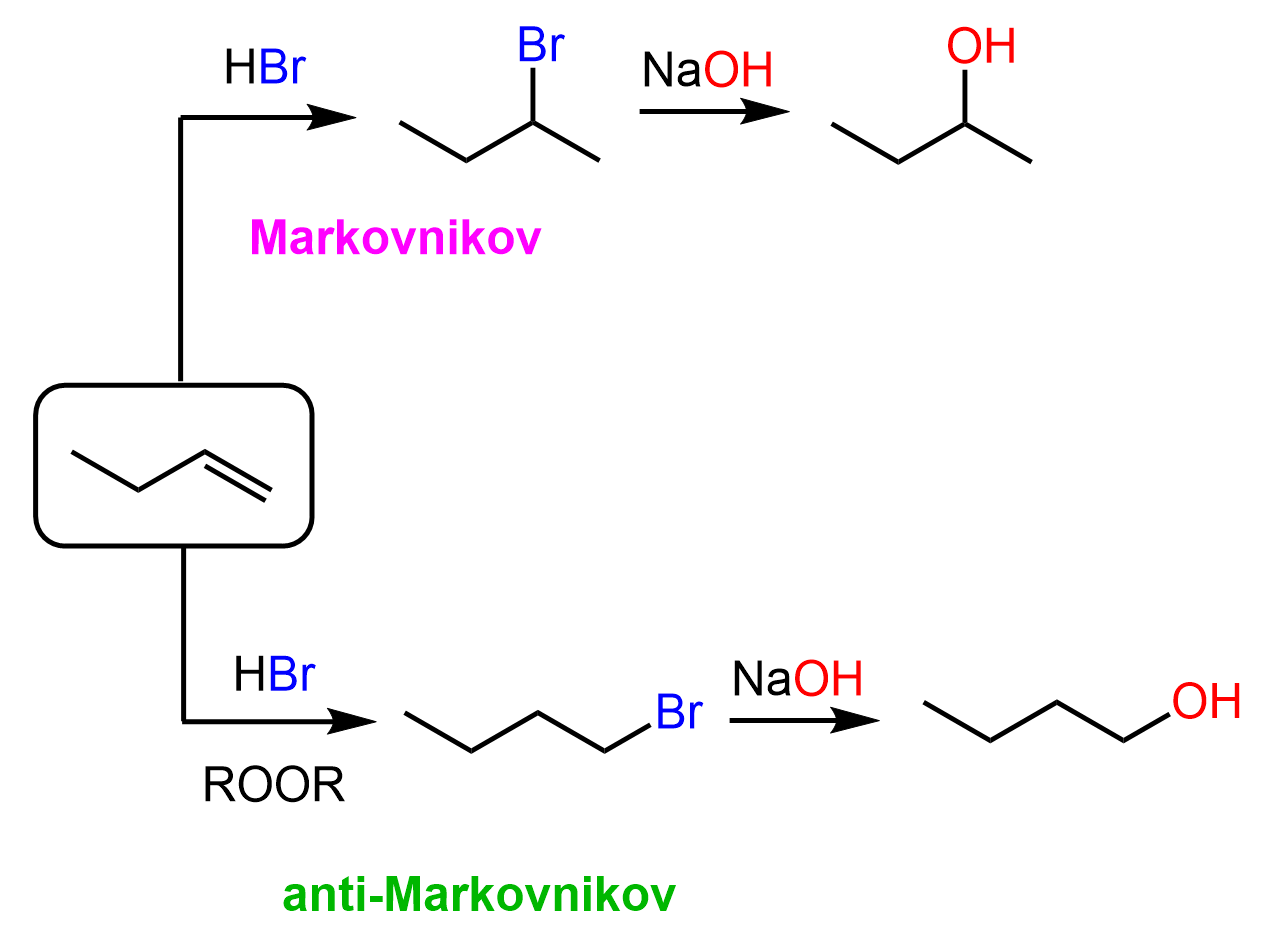
Notice that here as well, we can use a Markovnikov or anti Markovnikov (radical addition of HBr to alkenes) hydrohalogenation of unsymmetrical alkenes to prepare the corresponding alcohols. Once the alkyl halides are formed, we can use them in SN2 substitution reactions with NaOH to obtain the desired alcohols. Keep in mind that secondary alkyl halides are prone to undergoing E2 as well (deciding between SN1, SN2, E1, and E2).
In the next post, we will also go over the reactions for converting alcohols to alkenes, summarized below:

Organic Chemistry Reaction Maps
Never struggle again to figure out how to convert an alkyl halide to an alcohol, an alkene to an alkyne, a nitrile to a ketone, a ketone to an aldehyde, and more! The comprehensive powerfull Reaction Maps of organic functional group transformations are here!







